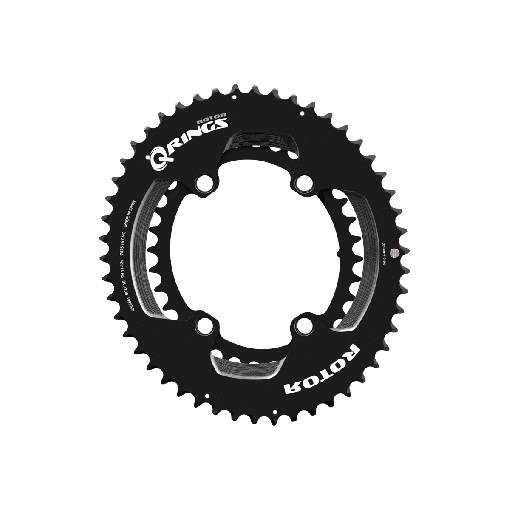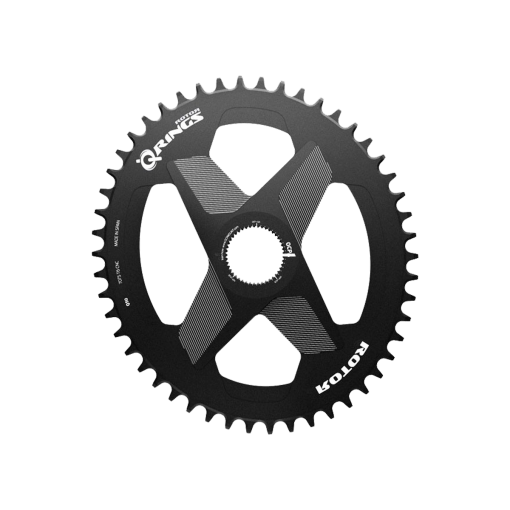GO OVAL, TRY Q.
Q RINGS have been designed to improve your pedaling efficiency by reducing dead spots in your pedal stroke. The oval shape of the chainring leads to a smoother, more efficient pedal stroke overall. This can lead to improved performance, reduced fatigue, and even a lower risk of injury over time.
Another benefit of Q RINGS is the ability to customize the ovality to your specific needs through our OCP technology. This allows you to adjust the orientation of the chainring to optimize the ovality for your individual pedaling style, resulting in a more personalized and effective riding experience. Additionally, our Q RINGS are compatible with most cranksets, making them a versatile and easy-to-install upgrade for any cyclist.
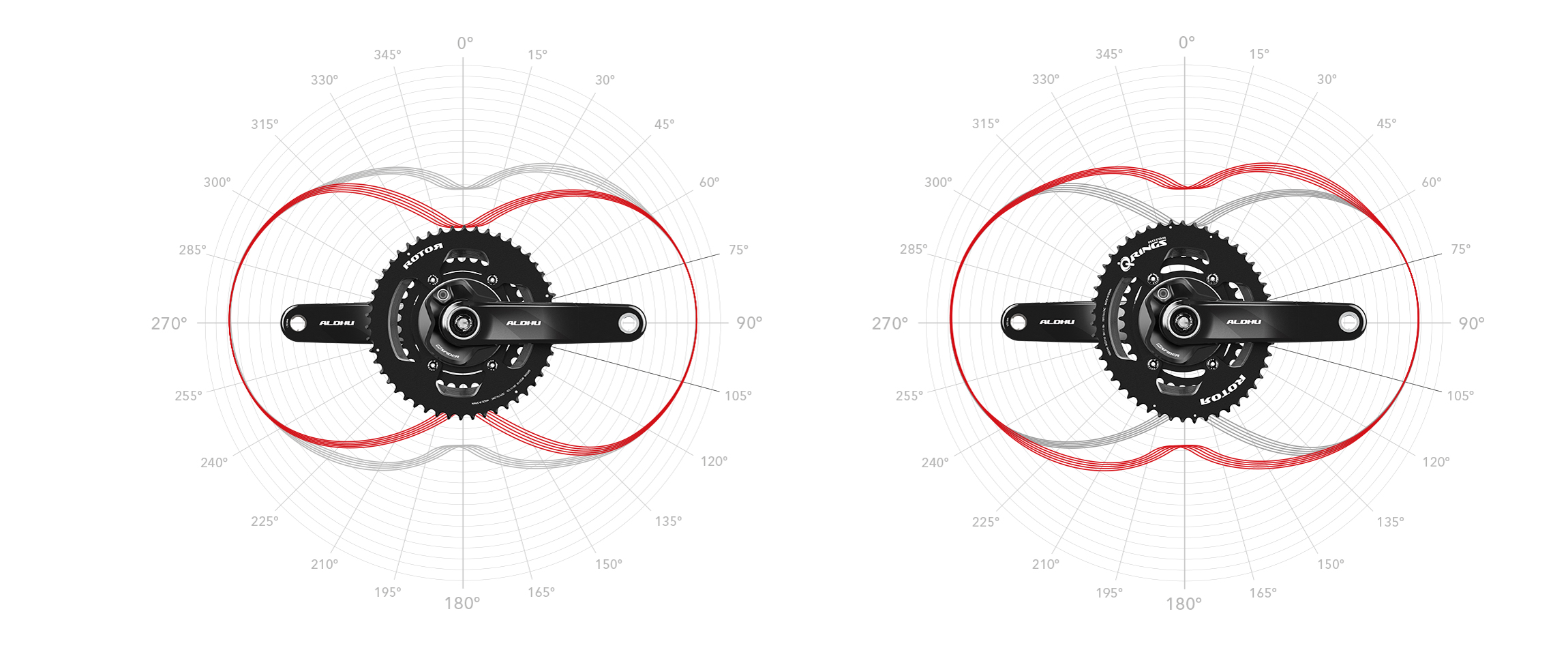

ADAPTATION
Q rings make use of your leg muscles in a different way than round chainrings do. By doing so, the intermuscular coordination of your movements changes and it takes some time to adapt. The following guidelines describe the adaptation process from round to oval.
Each phase can vary from a day to a week. Complete adaptation to the new chainrings can take up to 10 hours. Nevertheless, it only takes one pedal stroke for you to feel the oval chainrings’ benefits from the very first minute. You will note it significantly when climbing, as well as in an aerodynamic position when training for time trial or triathlon.
If you have trouble with your knees when riding, pay special attention to them during the adaptation phase. Riding with oval chainrings affects different biomechanical processes and strengthens the inner leg muscles, which, in turn, lessens strain on the knee. Riding with oval chainrings can therefore particularly help cyclists with knee problems to enjoy more frequent and longer rides.
Exercises such as pedaling with one leg only, or pedaling at a very high cadence are helpful to ride more efficiently. Oval chainrings minimize the dead spots and therefore help the rider save power. The adaptation process is specific to the individual, varies in length and doesn’t need any preparation
Adaptation isn’t limited to habituation, but also includes training muscles that were used minimally before. This leads to a better overall balance of muscle groups involved when riding. Once you passed through this process you will notice – oval becomes normal.
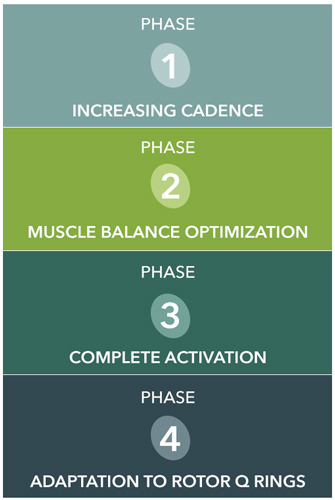

HOW DO I KNOW MY OCP?
Adjusting the OCP on your Q RINGS is a simple process that can be done with just a few tools. First, it's important to determine your OCP using our patented metric OCA, what can be done using one of our power meters and recording some of your training sessions with our ROTOR Power app. This will provide you with the optimal chainring angle for your individual pedaling style.
Once you have determined your OCP, you can adjust the orientation of your Q RINGS to achieve the optimal ovality for your needs. This can be done by removing the crank and rotating the chainring to the desired position on the axle. The axle have a series of small markers on the spline that indicate the OCP position. Simply align the markers with the OCP hole of the spider and tighten the bolts to secure the chainring in place. Some of our cranksets have the spline on the right crank instead of on the axle, so those markers are on the crank.
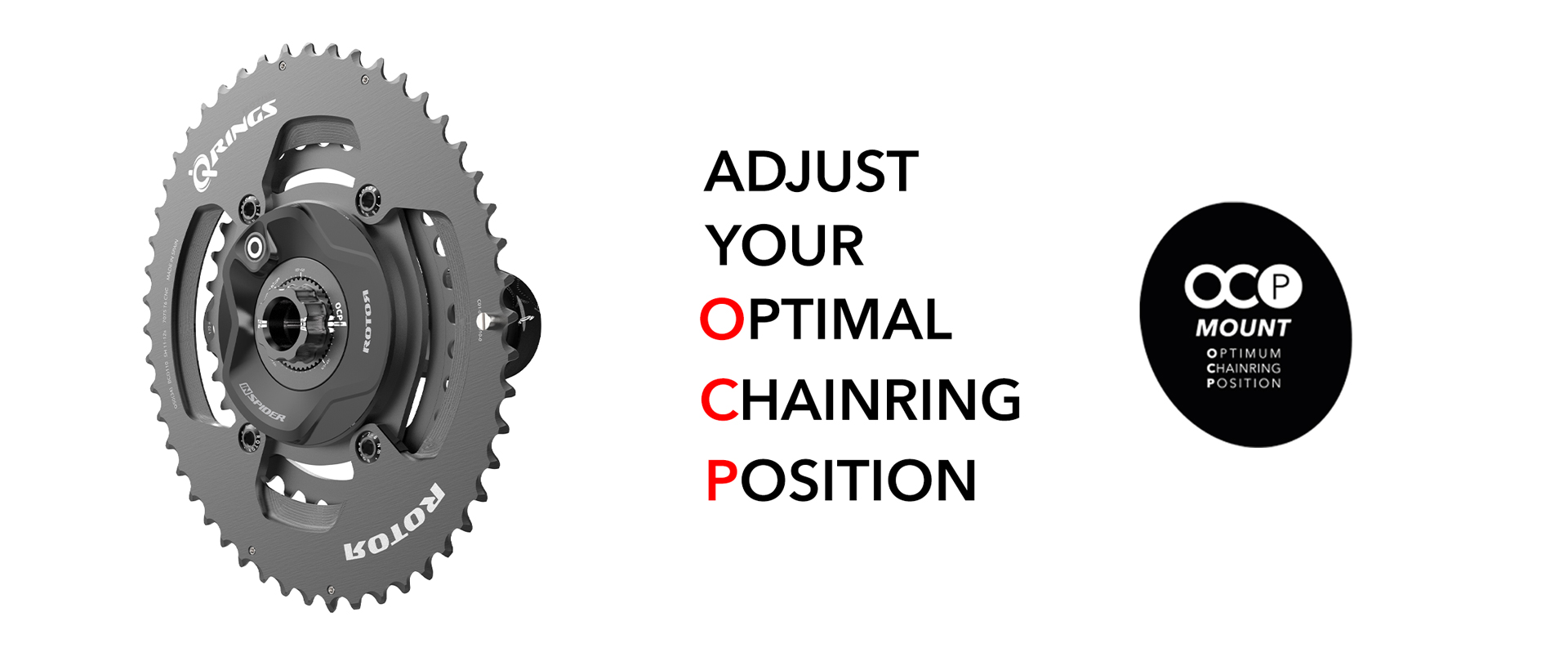

ADJUSTING Q RINGS TO YOUR OCP
If you haven’t yet determined your OCP, have a look at the small booklet that comes with every ROTOR Q ring; it contains simple instructions about how to find your correct OCP.
In more than 90% of the cases, you will be fine with the standard, recommended position (e.g. “3” on a road bike).
This is another reason why we recommend going through part 1 first, ride for at least 10 hours before changing the OCP. With respect to road cycling, “standard” means position 3 out of a 5 possible positions – which means you still have 4 other options to try out.
With respect to off-road riding, standard means position 2 out of a possible 3, so you have two other options to work with.

